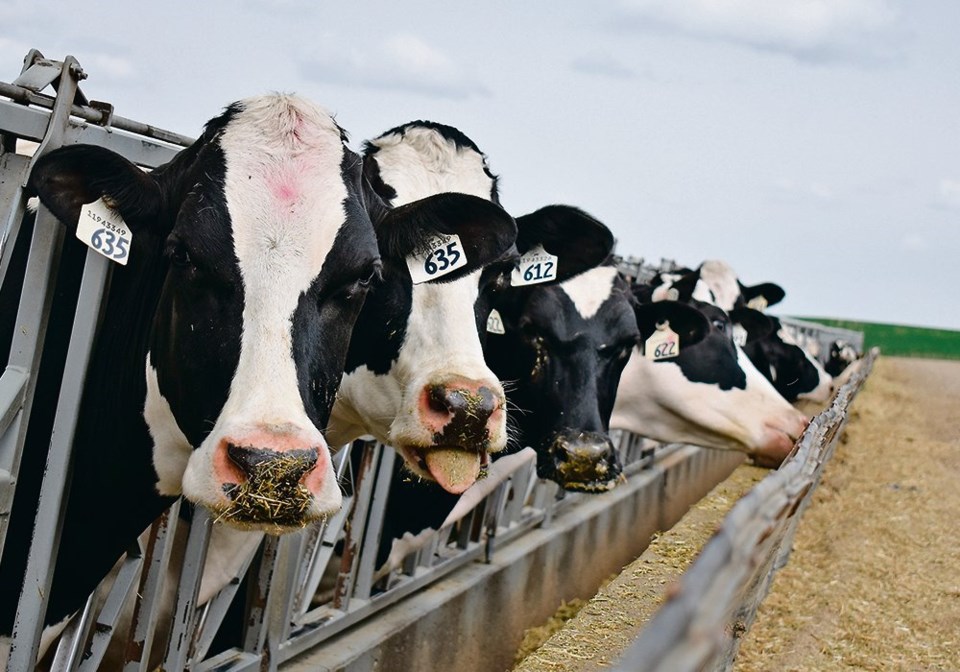WESTERN PRODUCER — Canada will have to change how it allocates dairy tariff rate quotas from the United States after a dispute resolution panel ruling released last week.
The panel, after an investigation requested by the U.S., ruled that Canada’s system of allocating all TRQs to domestic processors violated the Canada-U.S.-Mexico Trade Agreement. However, it didn’t specify how Canada should actually allocate the import quotas.
“The decision doesn’t say anything about to whom the TRQs should be allocated,” said Dairy Processors Association of Canada president Mathieu Frigon. “It says you cannot reserve a share exclusively for the use of processors.”
CUSMA established TRQs, or preferential tariff rates on specific quantities, for 14 categories of dairy products. Canada chose to allocate those TRQs to processors, which largely bring in industrial milk and cheese for further processing. This adds value within Canada.
The U.S. would prefer that distributors and retailers get access to the quotas so it could export higher-value products like cheese into Canadian grocery stores.
Both sides claimed victory after the ruling was released.
“Today’s decision is an important victory for U.S. dairy farmers and the millions of Americans whose jobs are tied to the U.S. dairy industry,” said Jim Mulhern, chief executive officer of the National Milk Producers Federation.
Canada’s agriculture minister Marie-Claude Bibeau and international trade minister Mary Ng issued a statement saying the panel “ruled overwhelmingly in favour of Canada and its dairy industry.
“In particular, it is important to note that the panel expressly recognizes the legitimacy of Canada’s supply management system,” they said. “The panel also confirms that Canada has the discretion to manage its TRQ allocation policies under CUSMA in a manner that supports Canada’s supply management system.”
International trade expert Peter Clark said there was no basis on which to condemn supply management because it wasn’t precluded by the agreement.
He said Canada will have to comply with the ruling but it’s unclear how it will do that. The imports under CUSMA are new, so there is no historical information on which to base allocation, he said, and the government has been reluctant to auction the entitlements or have lotteries because that adds to the price and unpredictability.
“They’ll have to look at it and it will come up to a negotiation with the U.S. and what’s going to be acceptable to them,” Clark said in an interview. “There’s still going to be a vast preponderance of that dairy product (that) is going to have to go into processing, so they’re going to have to find a way to do it which leaves some of the market open to distributors and retailers.”
Frigon said processors have always wanted the vast majority of TRQs and hope to maintain their share while complying with the ruling.
“We will be working with the government to look at options to bring the Canadian allocation mechanism in conformity with the decision,” he said.
Frigon said under both CUSMA and the Comprehensive and Progressive Agreement for Trans-Pacific Partnership all allocations have gone to processors and that helps maintain a viable supply management system. Processor stability could be affected by the ruling.
“It’s important to comply with the decision but it’s also just as important not to go beyond the decision,” he said.
Processors have said they should receive the allocations because they are hit head-on by the trade agreements that permitted more imports.
“Dairy processors are ideally positioned in the supply chain to import product that will increase options to consumers but also will take into account the market conditions,” Frigon said.
For example, imports are highest in the fall when Canadian milk production is lowest. Processors make decisions that affect the entire system, he said.
Clark likened this dispute to Canada’s challenge of country-of-origin-labelling. Canada won that case on the basis of how the U.S. labelled meat, not the fact that they did it.
“The Canadian approach has always been to maximize the amount of industrial milk and bulk dairy products that we import within the quotas to ensure there is an adequate supply for the dairy processing industry,” he said. “There are limits within the agreement; you can’t allocate exclusively to processors and that’s what the issue is. They’re trying to sort out where the line will be, or if there’ll be a line.
“It’s very complex stuff.”
Clark said he suspects the Americans were concerned that the quotas weren’t 小蓝视频 used but the agreement has only been in place a short time and they have also recently had high milk prices. The quotas were estimated to be worth US$270 million. He said it seems likely Canadian processors would use cheaper imported inputs if available.
He said it’s “an awkward time” to examine this issue given higher U.S. prices and COVID supply chain issues. Canadian farmers were having trouble getting rid of all their milk, he noted.
Clark also said the Americans want to sell more butter, for example, at retail yet within their own country they don’t allow that. Kerrygold butter from Ireland is on store shelves in some states but not allowed in others.
“There’s a little bit of hypocrisy there,” said Clark.
As for Canadian dairy farmers, he said they may have to provide more industrial milk and that could change how they operate. It’s not clear if they would lose markets for finished products.
Canada has until Feb. 3 to comply.

